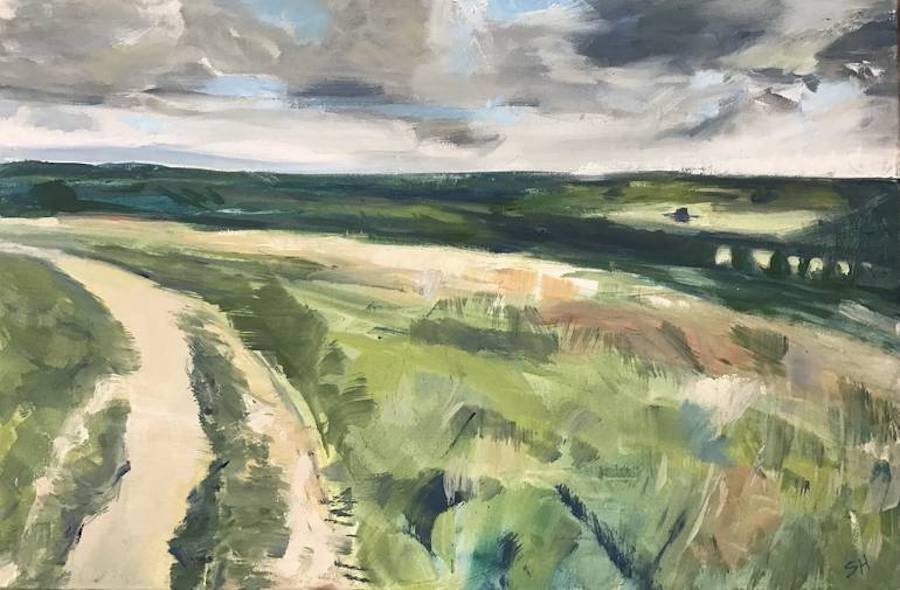Hacking through over grown footpaths while searching for signs of a route across the countryside can feel like being in the film Raiders of the Lost Ark. Do we need a new approach to making the countryside more accessible?
I find most footpaths close to a town and city have clear directions and accessible footpaths. The trouble starts when I stride out to explore the countryside. I have come across finger posts, the tall posts that point the way of the footpath, that have been decimated by hedge cutting equipment or knocked over, foot stiles that haven’t been repaired for years, and overgrown footpaths that are lost in amongst bramble bushes. Then there are the gates. Kissing gates, those that swing backwards and forwards, can be difficult to open and manoeuvre through with a buggy or wheelchair, and if you have to open a field gate then be prepared for some heavy lifting. Then the routes themselves can pose many challenges. The worst are those that go through people’s gardens, or through the middle of a farm yard, where you are usually greeted with a death stare or a barking dog. Often a planned route can be several miles from sensible parking and therefore a few miles have to be added to the walk which can turn the day into a major hike. Then there are footpaths that cross fields full of animals, in particular a bull. Although there is great advice in the The Countryside Code about crossing fields with animals, it is still too daunting for many and then a ‘re-route ‘ is required which can add more miles to the walk. All of these small challenges can take the enjoyment out of a day walking through the countryside.
It is not all bad. Some farmers try and help the walker. For example running tractor tracks across their fields to show the route direction. Sometimes they re-route the footpath around their farms to keep walkers clear from a busy farmyards and allow Premissive Pathways, which usually offer better routes across their farms. But they are the exception rather than the rule.
The future of footpaths are in trouble. A recent report describes over 32,000 places were blocked through lack of maintenance. Then there is the wider issue of losing ancient footpaths with all of their history. The UK Government recently announced it would be implementing a deadline of 2031 to save the 41,000 miles of lost paths in England. After that date we will no longer be able to claim rights of way in England based on historic evidence. Maintenance for public rights of way falls between local councils who should make sure the footpaths are kept in good order and the farmers who are responsible for keeping the footpaths clear. Both parties are strapped for cash and therefore footpaths are a very low priority.
But there is a strong case for making access to the countryside available to the wider population. The health benefits are many and are discussed daily in the media. They include improvements in physical health, wellbeing, reducing stress and improving sleep quality. The newly introduced Social Prescribing includes walking, and the UK government are trialling the effect of walking on peoples physical and mental health. With increasing demand for walking then there will be more pressure on farmers and local councils to make sure that footpaths are in good order. Rather than rolling their eyes they should look at it as a good opportunity to promote the countryside and farming in general.
Farmers are nearing the end of the Agricultural Transition Plan which is taking farming subsidies from Direct Payments where they are paid on the amount of agricultural land that they own to Environmental Land Management ( ELM ) where they will be paid public payment for public goods. Given the amount of press about the difficulty in implementing ELMs then there will probably be an ELMs 2.0 which would be the time to add more support for the farmers through additional payments to help manage the footpaths going across their land. Funding could be taken from the Office for Health Improvment and Disparities whose role is to improve the nation’s health, and moved to ELMs. One side effect would be to bring farmers closer together with their local communities as well as educate the wider public about the important role that they play in the life of the country.
Access to the countryside needs improving if more people are going to benefit from what the UK can offer. Some simple rule changes to farming subsidies, backed with some money, would make the benefits of walking through the countryside available to the wider population. In the future, rather than coming across people lost and confused about the route, I hope to find them excited about the wonderful countryside that the UK has to offer.
